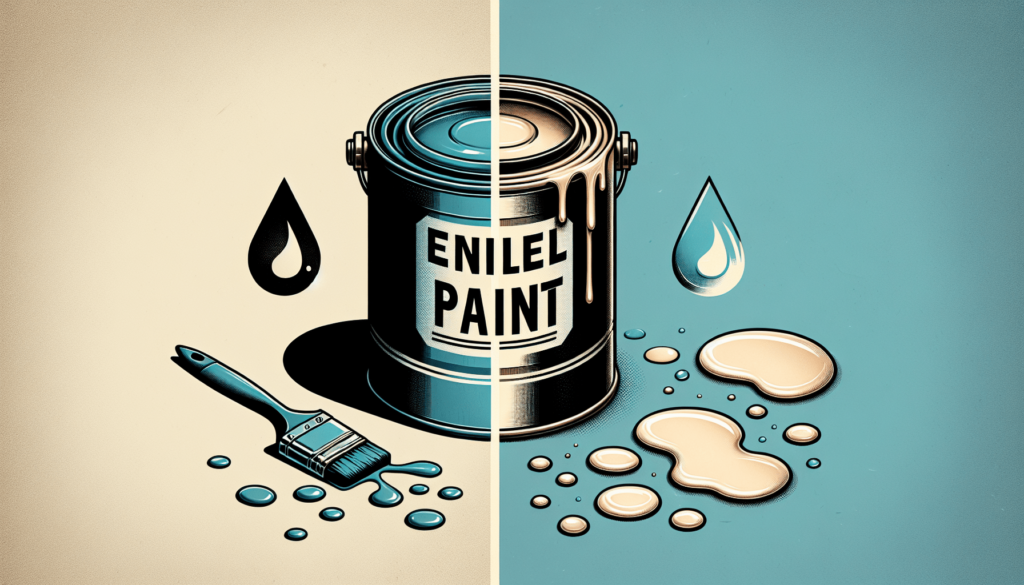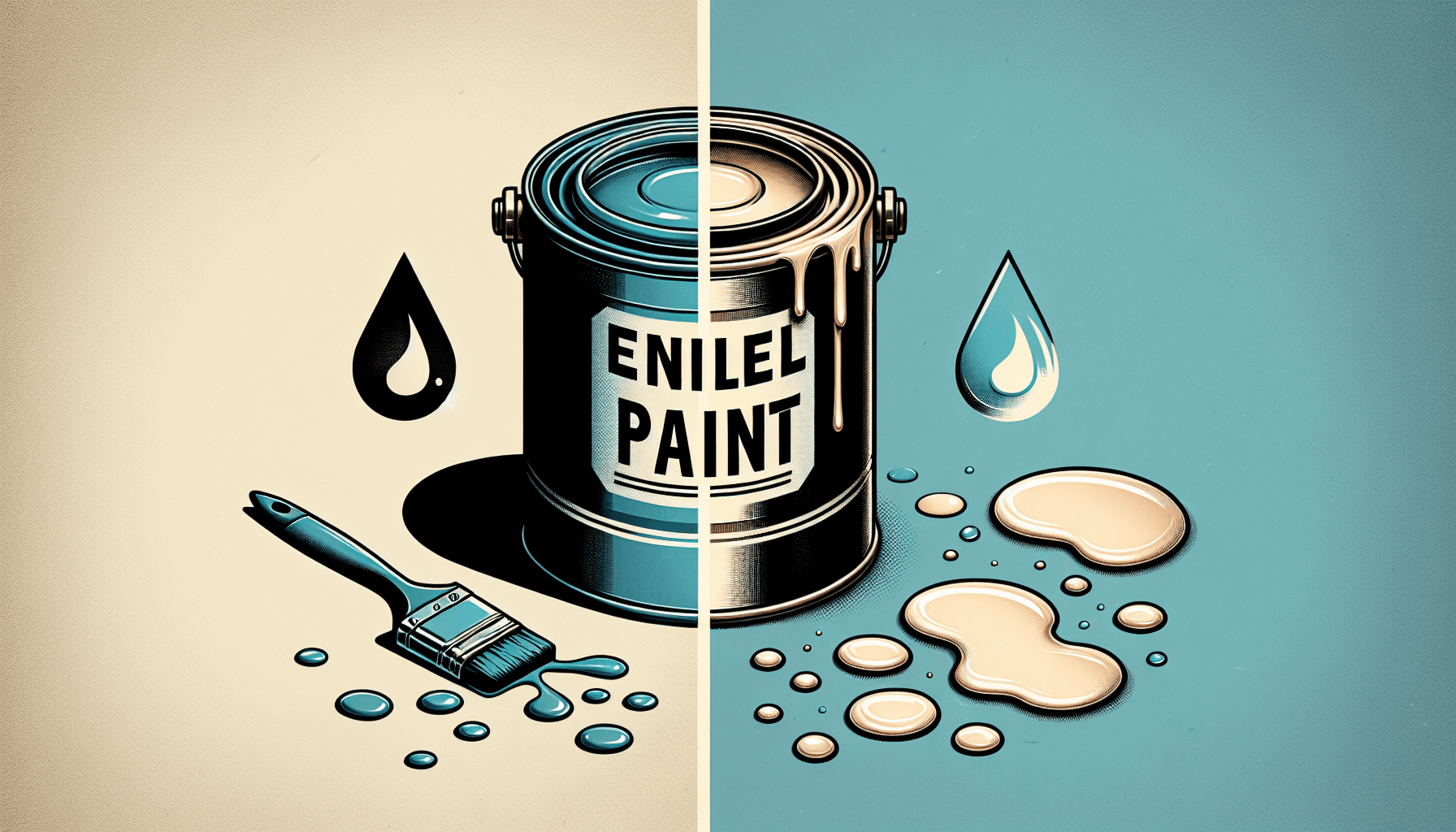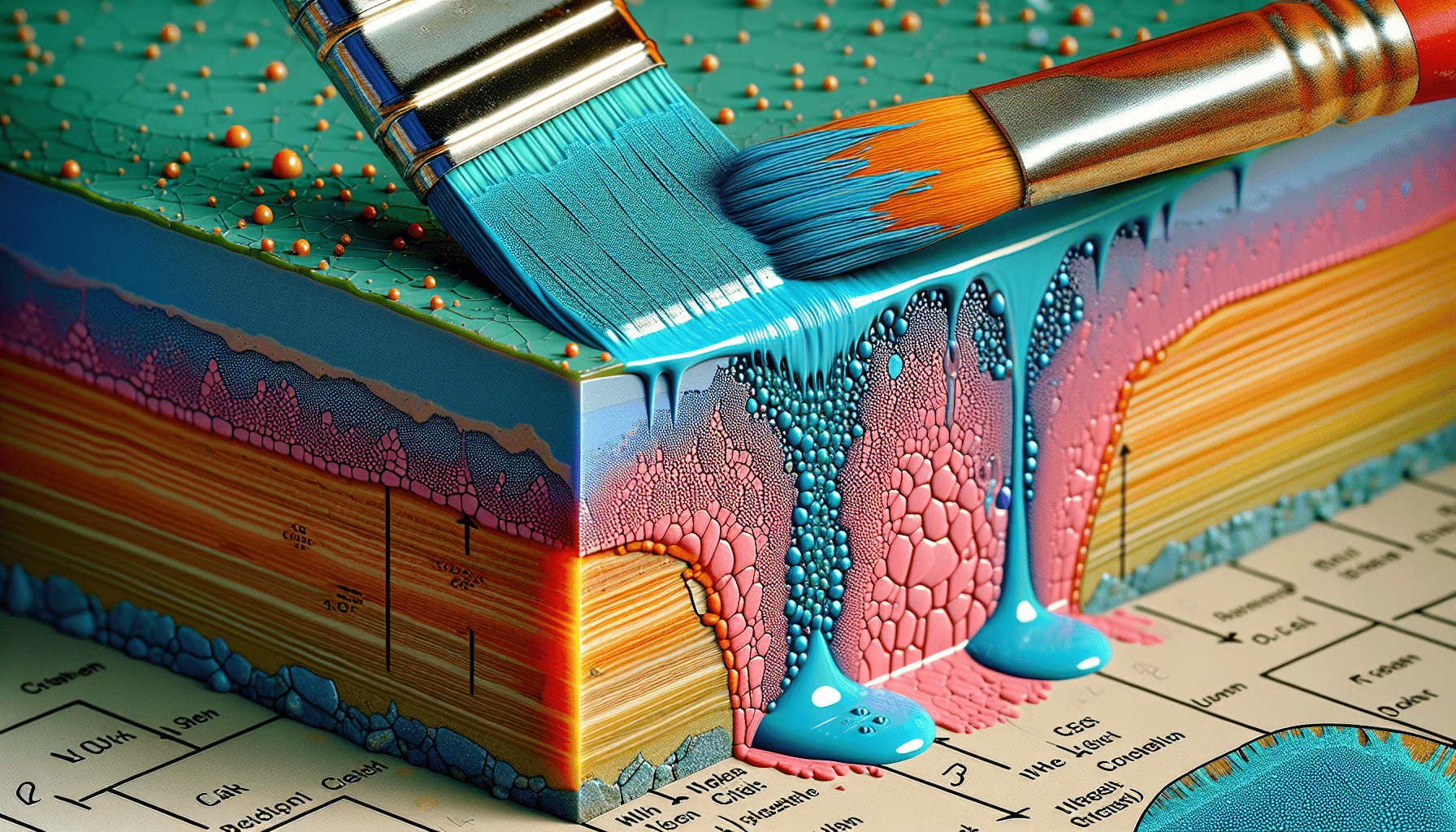Enamel paint is a term often used to describe a lustrous, durable, and glossy finish that can be achieved on various surfaces. However, a common point of confusion arises when discussing whether enamel paint is latex-based or not. This article aims to provide a concise answer to the question: is enamel paint latex? By exploring the differences between enamel paint and latex paint, we will gain a better understanding of their composition and application. So, let’s delve into the world of paint and uncover the truth behind enamel paint and its connection, or lack thereof, to latex.
What is Enamel Paint?
Enamel paint refers to a type of paint that is known for its hard, glossy finish. It is commonly used in various industries and applications due to its durability and aesthetic appeal.
Definition of enamel paint
Enamel paint is a type of paint that is typically oil-based and contains a resin that provides a hard, durable coating. The name “enamel” comes from the glossy finish that the paint provides, resembling the smooth, lustrous appearance of traditional enamel.
Properties of enamel paint
Enamel paint offers several key properties that contribute to its popularity and versatility. These properties include:
-
Durability: Enamel paint is known for its high resistance to wear and tear. It can withstand frequent use, making it suitable for surfaces that require long-lasting protection.
-
Glossy finish: The glossy appearance of enamel paint adds a luxurious touch to surfaces. This smooth finish not only enhances the visual appeal but also makes it easier to clean.
-
Moisture and stain resistance: Enamel paint is known for its ability to repel moisture and resist stains. This makes it an ideal choice for areas prone to high humidity or potential staining, such as kitchens and bathrooms.
-
Hardness: Enamel paint dries to a hard, solid surface. This property ensures that the paint coating is less prone to chipping or cracking, providing an added layer of protection to the underlying surface.
Understanding Latex Paint
Latex paint, also known as acrylic paint, is another common type of paint used in various applications. It offers distinct properties that set it apart from enamel paint.
Definition of latex paint
Latex paint is a water-based paint that uses acrylic resins as its binder. It is known for its ease of application, quick drying time, and low odor.
Properties of latex paint
Latex paint offers several notable properties that make it a popular choice for both professional painters and DIY enthusiasts. These properties include:
-
Ease of application: Latex paint is known for its ease of use. It can be applied with a brush, roller, or sprayer, making it convenient for various painting projects. Additionally, latex paint is easy to clean up with soap and water, reducing the hassle of paint removal.
-
Quick drying: One of the advantages of latex paint is its fast drying time. In most cases, latex paint will dry to the touch within an hour or two, allowing for multiple coats to be applied in a relatively short period.
-
Low odor and toxicity: Unlike oil-based paints, latex paint has a significantly lower odor and is generally considered less toxic. This makes it a safer option for those with sensitivity to strong paint fumes or for indoor painting projects where ventilation may be limited.
-
Flexibility on various surfaces: Latex paint can be used on a wide range of surfaces, including wood, drywall, and even previously painted surfaces. It adheres well to most materials and provides a durable finish that can withstand everyday wear and tear.

Comparison between Enamel Paint and Latex Paint
When considering which type of paint to use for a specific project, it is important to understand the differences between enamel paint and latex paint. Several factors set them apart, including their chemical composition, application methods, finish and durability, and cleaning and maintenance requirements.
Chemical composition
Enamel paint is typically oil-based, meaning it uses oil as its solvent and binder. In contrast, latex paint is water-based and uses acrylic resins as its binder.
Application methods
Enamel paint is often applied with a brush or sprayed onto surfaces. It can be slower to dry and may require additional coats for optimal coverage. On the other hand, latex paint can be applied with a brush, roller, or sprayer, offering more flexibility and ease of application.
Finish and durability
Enamel paint provides a smooth, glossy finish that is highly durable and resistant to wear and tear. It is commonly used for surfaces that require a high level of protection, such as metal or automotive applications. Latex paint, while it can also provide a smooth finish, does not have the same level of durability as enamel paint. It is more commonly used for interior and exterior walls, where the need for high durability is not as critical.
Cleaning and maintenance
Enamel paint is relatively easy to clean and maintain, thanks to its moisture and stain resistance. It can withstand regular cleaning with mild detergents and water without losing its luster. Latex paint is also easy to clean, typically requiring only soap and water. However, it may not be as resistant to stains and moisture as enamel paint.
Is Enamel Paint Latex or Oil-Based?
Enamel paint can be confusing when it comes to determining whether it is latex or oil-based. However, it is important to note that enamel paint is typically oil-based. The term “enamel” refers to the glossy finish that the paint provides, rather than its composition.
Differentiating enamel paint types
While enamel paint is commonly associated with oil-based formulations, there are also latex enamel paints available. These latex enamel paints provide a glossy finish but have a different chemical composition compared to traditional oil-based enamel paint.
Latex enamel paint
Latex enamel paint combines the properties of latex paint and enamel paint. It is water-based, using acrylic resins as its binder, but offers a glossy finish similar to traditional enamel paint. This type of paint is often used in applications where a durable, yet water-based, glossy finish is desired.
Oil-based enamel paint
Oil-based enamel paint, as the name suggests, is formulated with oil as its solvent and binder. It provides a durable, high-gloss finish that is ideal for surfaces that require superior protection against wear and tear. Oil-based enamel paint can be more challenging to work with due to its longer drying time and stronger odor, but it offers excellent durability and longevity.

Advantages of Enamel Paint
Enamel paint offers several advantages that make it a popular choice for various applications. These advantages include:
High durability
Enamel paint is known for its high level of durability and resistance to wear and tear. It can withstand frequent use, making it suitable for surfaces that undergo heavy traffic or are exposed to harsh conditions.
Smooth and glossy finish
One of the main attractions of enamel paint is its smooth and glossy finish. This finish adds a touch of elegance and sophistication to surfaces, making it a popular choice for decorative purposes.
Resistance to moisture and stains
Enamel paint is naturally resistant to moisture and stains, making it ideal for areas prone to high humidity or potential staining. This property ensures that the paint retains its original appearance and remains easy to clean over time.
Advantages of Latex Paint
Latex paint offers its own set of advantages that make it a versatile choice for various painting projects. These advantages include:
Ease of application
One of the key advantages of latex paint is its ease of application. It can be applied with a brush, roller, or sprayer, and it generally provides good coverage with fewer coats. This makes it a convenient option for both professional painters and DIY enthusiasts.
Quick drying
Latex paint has a fast drying time compared to oil-based paints. In most cases, latex paint will dry to the touch within an hour or two, allowing for multiple coats or subsequent steps to be completed more quickly.
Low odor and toxicity
Unlike oil-based paints, latex paint has a significantly lower odor and is generally considered less toxic. This makes it a safer option for indoor painting projects, especially in areas where ventilation may be limited.
Flexibility on various surfaces
Latex paint adheres well to a wide range of surfaces, including wood, drywall, and previously painted surfaces. It offers good adhesion and durability, making it suitable for both interior and exterior applications.
Common Uses of Enamel Paint
Enamel paint finds its application in various industries and projects that require a durable and glossy finish. Some common uses of enamel paint include:
Automotive industry
Enamel paint is widely used in the automotive industry due to its ability to withstand constant exposure to environmental factors, such as UV rays and harsh weather conditions. It provides a protective coating and a glossy finish to automobiles, ensuring they remain visually appealing and resistant to corrosion.
Furniture and cabinetry
Enamel paint is often used to provide a smooth and durable finish to furniture pieces and cabinetry. It enhances the aesthetic appeal of these items while protecting them from everyday wear and tear.
Metal surfaces
Enamel paint is an excellent choice for painting metal surfaces, such as metal doors, railings, or fences. Its durability and resistance to rust make it ideal for protecting metal against corrosion and providing an attractive finish.
Outdoor applications
Enamel paint is suitable for a variety of outdoor applications, such as exterior trims, doors, and windows. Its ability to withstand exposure to the elements, such as rain, sun, and temperature changes, makes it a preferred choice for long-lasting protection.
Common Uses of Latex Paint
Latex paint is widely used in both residential and commercial projects for its versatility and ease of application. Some common uses of latex paint include:
Interior and exterior walls
Latex paint is commonly used for painting interior and exterior walls. Its quick drying time, low odor, and ease of application make it a popular choice for both professionals and homeowners.
Ceilings
Latex paint is also suitable for painting ceilings due to its quick drying properties and easy application. It provides a smooth finish and can be applied to various ceiling materials, such as drywall or plaster.
Wood and drywall
Latex paint is often used for painting wood surfaces, such as doors, trim, or furniture. It adheres well to wood and provides a durable finish. Additionally, latex paint can be applied to drywall, making it a versatile option for interior painting projects.
Decorative finishes
Latex paint offers a wide range of colors and finishes, making it ideal for achieving decorative effects. Whether it is creating a faux finish, stenciling, or adding accents to a room, latex paint provides the flexibility to achieve various decorative effects.
Conclusion
In conclusion, enamel paint and latex paint are both popular choices for different applications. Enamel paint is known for its durability, glossy finish, and resistance to moisture and stains. It is commonly used in the automotive industry, furniture and cabinetry, and for outdoor applications. On the other hand, latex paint offers ease of application, quick drying time, low odor, and is more versatile on various surfaces such as walls, ceilings, wood, and drywall. It is commonly used for interior and exterior painting projects, including decorative finishes. When selecting the right paint for your project, it is important to consider the specific requirements and desired outcome, whether it is high durability or ease of application. By understanding the properties and uses of both enamel paint and latex paint, you can make an informed decision and achieve the best results for your painting project.



